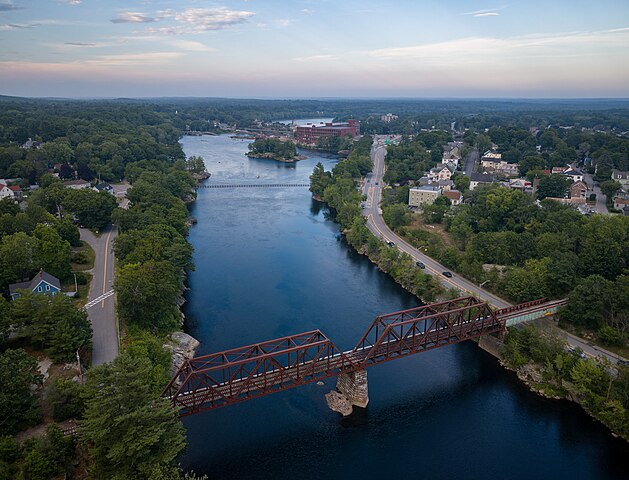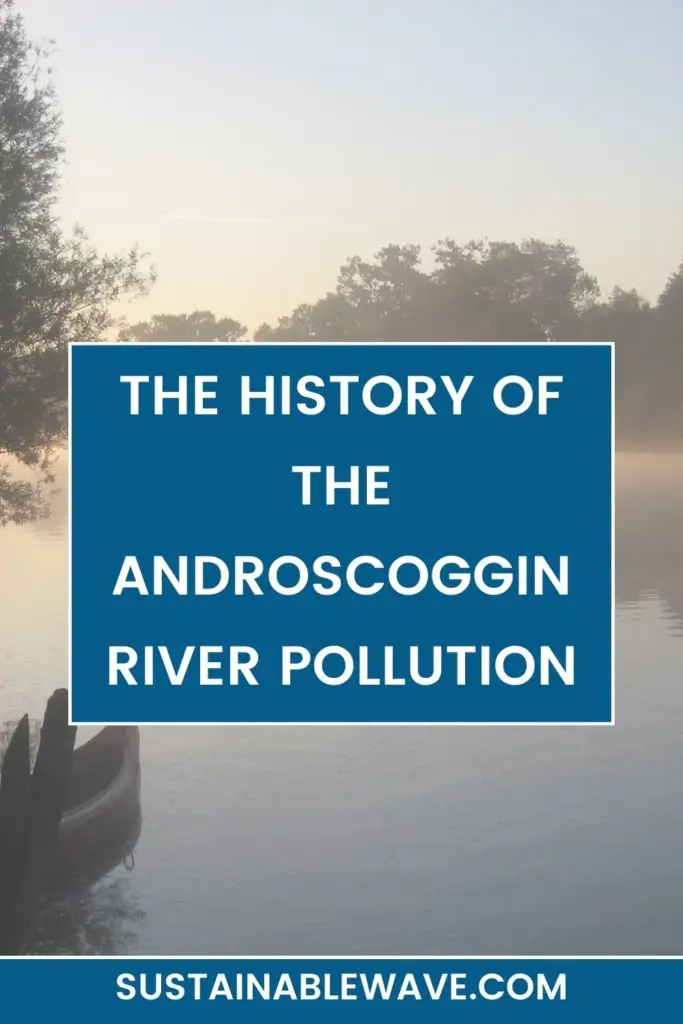The Androscoggin River, originating from the lakes of New Hampshire and flowing gracefully into Maine, holds a rich tapestry of history and natural beauty.
Spanning approximately 170 miles, it has played pivotal roles in both the industrial development of the region and the cultural heritage of its communities.
The reason for the Androscoggin River pollution can be due to industrial growth, but today’s Androscoggin stands as a testament to environmental resilience and restoration, beckoning nature enthusiasts and history buffs alike.
The Early Days of the Androscoggin River

Centuries ago, the river was a lifeline for Native American tribes, offering abundant fisheries and serving as a major transportation route. Its sparkling waters and rich ecosystem made it a treasure in the region.
However, as the wheels of the Industrial Revolution began to turn, mills and factories sprang up along the riverbanks. This burgeoning industrial activity, while economically lucrative, cast a looming shadow of pollution over the once-pristine river.
By the mid-20th century, the river was in dire straits. Factory waste, unchecked dumping, and environmental degradation rendered parts of it virtually lifeless. The stench from the river was so overpowering that local tales often likened it to “egg salad gone bad.”
Thankfully, as the severity of the pollution became undeniable, environmentalists and local communities rallied. Clean-up campaigns and grassroots movements began to gain momentum, advocating for the river’s rehabilitation.
The History of the Androscoggin River Pollution
The Androscoggin River, with its serene landscapes and rich ecological value, holds a tumultuous past that’s often overshadowed by its present beauty. Delving into its history reveals a tale of both negligence and revival.
In the late 19th and early 20th centuries, the Industrial Revolution took the world by storm, and the areas surrounding the Androscoggin were no exception. With the establishment of factories, mills, and other industrial units along its banks, the river soon became a convenient dumping ground for industrial waste.
The lack of stringent environmental regulations and oversight meant that pollutants were freely discharged into the river. Toxic chemicals, waste products, and other contaminants began to alter the river’s natural composition.
Fish populations dwindled as the water became inhospitable to most aquatic life. Native species that had thrived for centuries were suddenly on the brink of extinction. Residents living nearby recall times when the river’s surface was covered with frothy industrial effluents, and the pungent smell made it hard to breathe.
The Androscoggin wasn’t just a polluted river; it became synonymous with environmental degradation.
However, as the mid-20th century approached, environmental awareness began to spread. Communities living around the river, having witnessed its steady decline, started voicing their concerns. Grassroots movements, combined with mounting scientific evidence of the river’s deteriorating health, began to push for change.
The introduction of environmental regulations, most notably the Clean Water Act of 1972, marked a turning point. This act forced industries to rethink their waste disposal strategies and invest in waste treatment solutions. While the road to recovery was long and fraught with challenges, the consistent efforts of local communities, environmentalists, and policymakers slowly started to yield results.
By the late 20th century, there were tangible signs of improvement. Water clarity began to increase, the foul odor started to dissipate, and, most importantly, aquatic life began to return. Fish species that had disappeared started making a comeback, and the riverbanks, once barren, saw the return of greenery and wildlife.
Current State of the Androscoggin River
The Androscoggin River, which once bore the brunt of the Industrial Revolution’s heedlessness, has seen a remarkable transformation in recent decades. This transformation is a result of the concerted efforts of communities, environmental advocates, and governing bodies, all coming together to rejuvenate a river that was once written off as dead.
Today, the Androscoggin River has seen significant improvements in water quality over the years, making it safe for recreational activities like swimming. However, as with any natural body of water, it’s always advisable to check current conditions and local advisories before taking a dip.
Aquatic biodiversity has shown significant improvement. Many species of fish, including some that had almost vanished, have made a comeback. Salmon, which had become a rarity due to the river’s polluted state, are now increasingly seen during their annual migration.
This resurgence of aquatic life has also led to the return of predatory birds like ospreys and eagles, which are often spotted circling above the waters, scanning for prey.
Recreational activities on the river have seen a resurgence as well. The clear waters of the Androscoggin have become a haven for kayakers, canoeists, and anglers. Families are often seen picnicking by its banks, and children splash about in its shallows during summer.
The river has become a hub for community events, with boat races, fishing tournaments, and environmental workshops becoming regular features.
Several initiatives have played a role in maintaining the river’s health. Continuous monitoring stations have been set up to check for any signs of pollution or deterioration. Educational programs aimed at schools and local communities spread awareness about the importance of keeping the river clean.
Moreover, strict regulations ensure that industries located near the river adopt environmentally friendly practices.
However, while the Androscoggin’s recovery is indeed commendable, it’s essential to understand that the work is ongoing. Occasional challenges, such as unusual algae blooms or minor pollution incidents, serve as reminders that constant vigilance is required.
Collaborative efforts involving the public, industries, and regulatory bodies are vital to ensuring the river’s continued health.

I’m Thomas, the owner of SustainableWave. Passionately promoting a sustainable planet. With experience in various eco-roles, I’ll share green tips, sustainability hacks, and personal eco-journeys on my blog.






